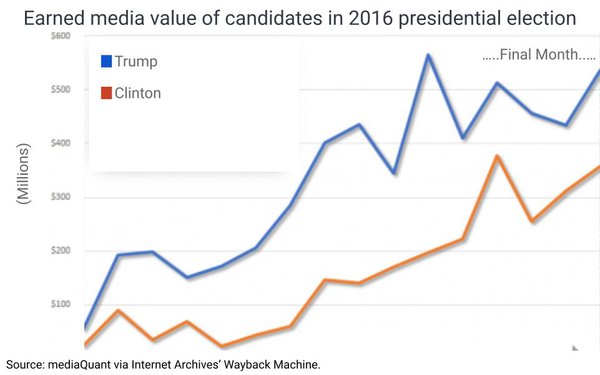Commentary
Perhaps The Greatest Threat To Democracy
- by Ed DeNicola , Op-Ed Contributor, June 29, 2023

It’s that time again when candidates for the next presidential election announce their intentions to run. There is a long list of presidential hopefuls in the primaries and for most of them, they will never make it on the 2024 ballot.
Looking at data from the PredictIt prediction market – prediction markets have a better record of accuracy than polls when predicting events that are a long way out into the future – Biden and Trump are ahead of all the other candidates as it relates to who will be the 2024 presidential nominees for the Democratic and Republican parties, respectively. Biden should be a shoo-in, as he’s the incumbent.
At these times, people often fret about all the various ways that elections may be manipulated or compromised. The most notable threats are election tampering, dark money contributions, billionaire contributions to super PACs, social-media disinformation and political operations like Cambridge Analytica* using data-driven advertising tactics such as Facebook likes for creating personality segments to target ads.
advertisement
advertisement
While all of these could be potentially harmful to our democracy, perhaps none have the potential to be as damaging as our very own media.
The fact is that the value of non-paid -- or what they call in the industry earned media coverage -- dwarfs all the paid advertising that occurs during an election.
The technology exists to track earned-media exposure. However, it’s not always done. Or if it is done, the data are not being made public as are regular campaign and PAC contributions via non-profit sources like OpenSecrets.
Paid political ads are well tracked. Both Kantar and Nielsen do a great job of tracking these campaigns including estimated ad spend. The data aren’t public; however, you can at least purchase it. Kantar will often make excerpts of the data available for marketing purposes.
The fact that the political contribution numbers are made public gives a good indication on what could be spent on paid advertising even if the actual ad-spending numbers aren’t known.
While it’s easy to find comprehensive earned-media coverage tracking for the 2016 presidential election, it’s more difficult to find for 2020. A Google search for 2020 will mostly bring up ads for companies that do earned-media tracking and some information on social-media exposure.
Data from research company mediaQuant in 2016 in The New York Times offers a great example of the problem. If you read it, you can see that at this point in the run-up to the November 2016 election, Trump had only spent $10 million on paid advertising. However, he received just under $1.9 billion in free earned media coverage. By comparison, his adversary on the democratic side (Hillary Clinton) had outspent him by almost three times, but she only received $746 million in free earned-media coverage.
The combined paid ad spend for these two candidates ($38M) was inconsequential relative to the much larger amount of free earned-media exposure ($2.6B). Political contribution numbers alone would not have exposed this inequity.
The source of the 2016 media exposure data is a research company called mediaQuant. The company doesn’t appear to be in the press with the same data for the 2020 presidential election. mediaQuant has a Facebook page; however, no posts have been made since 2018.
If you go to its website (mediaquant.net), you receive an error message that says, “This site can’t be reached.”
There are FCC equal opportunity rules for political programming that are to be followed by radio and broadcast TV stations for “legally qualified candidates.” Unfortunately, they don’t apply to cable channels, web-based video, or audio such as streamed video content, podcasts, or social media.
As a result, we only have FCC equal opportunity rules for a shrinking portion of the total media pie and little to no public tracking of earned-media coverage to even know the extent of the problem. This is an accident waiting to happen; in fact, it already did, and hardly anyone even knew about it.
Our media were too busy blaming other parties.
* Editor's Note: Ed DeNicola previously worked for Cambridge Analytica as head of TV.



What is meant by "free earned media coverage?"
In your example, both candidates were caught up in scandals - rape accusations, leaked tapes of lewd behavior, hidden servers in a basement.
I don't want to get into the politics of it, but it seems like this study is conflating the promotion of a candidate with news about a candidate. If a candidate is going to make a lot of news, good or bad, how is that a threat to democracy by informing the public? Again, "media coverage" and "earned media" or endorsement are totally different things.